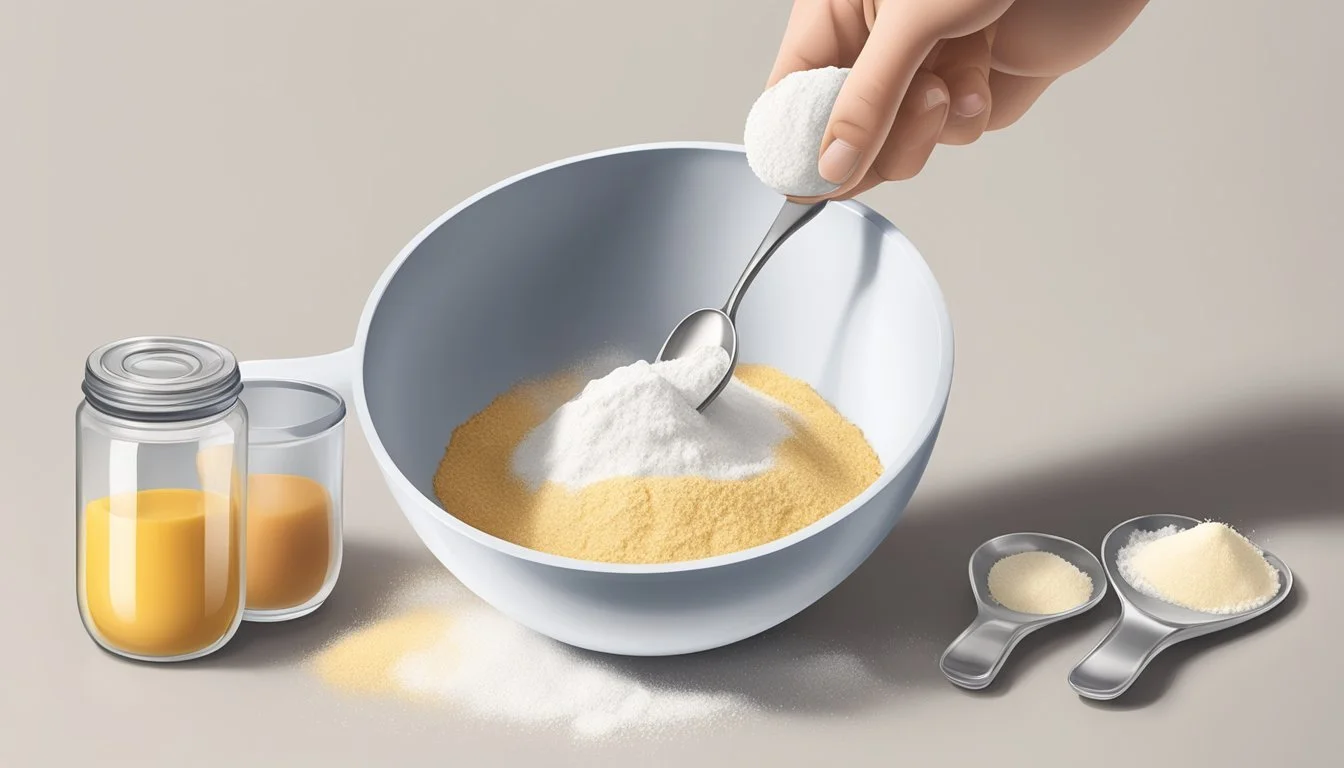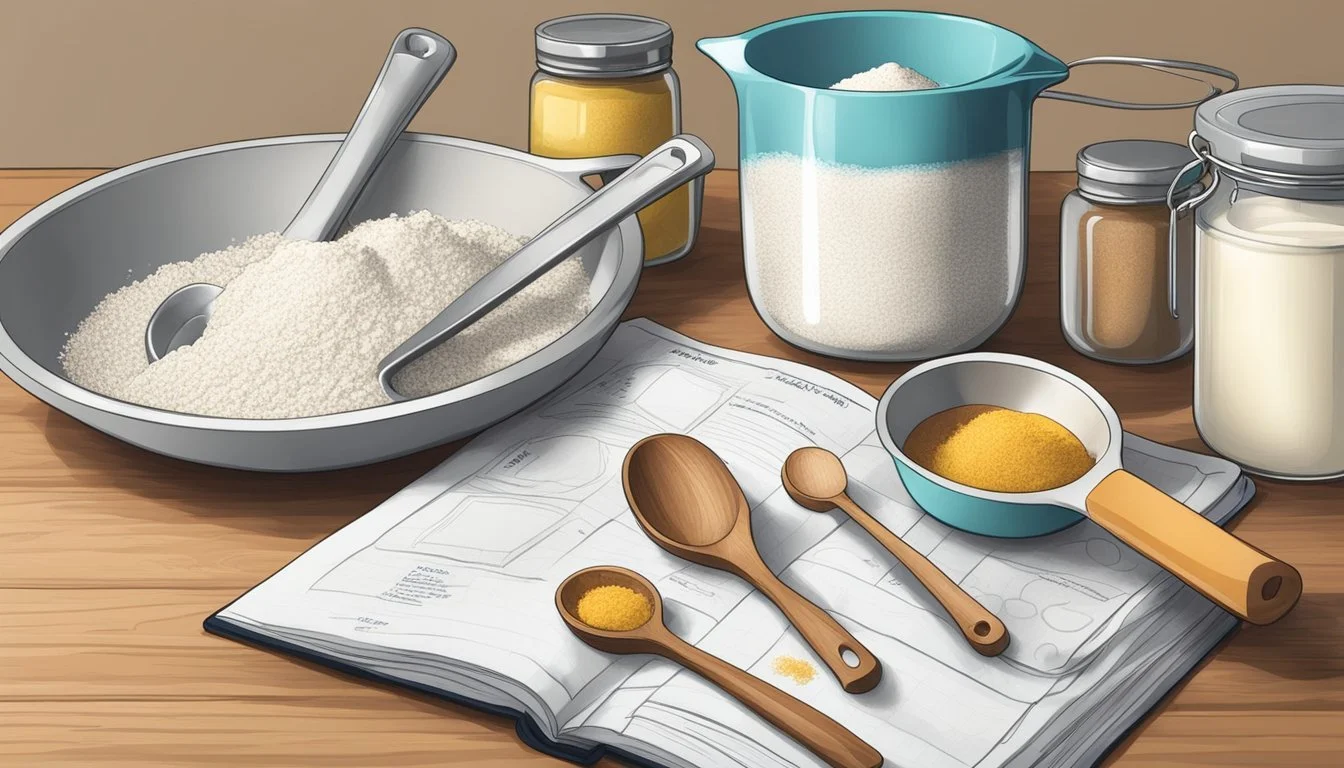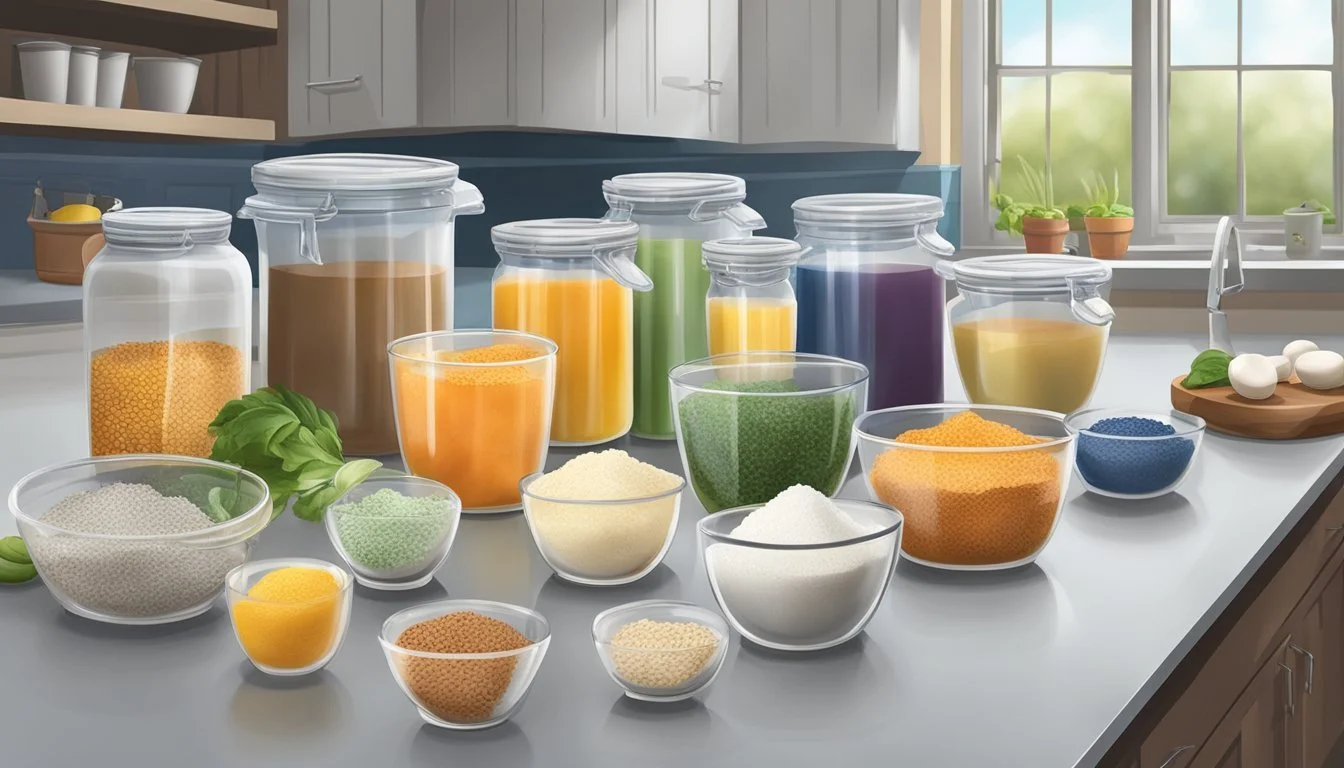How to Measure Ingredients for a Half Batch Recipe
Simple Scaling Techniques
Reducing the quantity of a recipe to accommodate a smaller group or satisfy a smaller appetite can be a straightforward process. When cooks need to halve a recipe, the task involves simple arithmetic – dividing the quantity of each ingredient by two. This approach works well for ingredients that are easily divisible, such as a cup of flour or sugar. However, certain ingredients like eggs can prove more challenging. A practical method for halving an egg includes beating it and then measuring out half of the volume.
Cooks looking to cut down a recipe should also be mindful of the adjustments in cooking times and temperatures. While the ingredients can be halved directly, the same may not be true for the cooking process; smaller batches often require less cooking time, and in some cases, a slight alteration in temperature. It is essential to monitor the dish closely to prevent overcooking.
Understanding that halving a recipe extends beyond merely reducing ingredient measures ensures one's culinary success. Accurate scaling of ingredients lays the groundwork, but it is the attention to altered cooking requirements that complements the process of creating a half batch. Whether it's baking or cooking, this approach helps maintain the desired texture and flavor of the dish, even in smaller portions.
Understanding Recipe Conversion
When halving a recipe, appropriate measurement adjustments are required to ensure the desired outcome. This section addresses the importance of precision, outlines the fundamentals of ratios and proportions, and introduces the use of recipe converters.
The Importance of Precision
For successful cooking and baking, precision is paramount, particularly when altering a recipe. A half batch recipe necessitates exact measurements to maintain the taste, texture, and structure of the original recipe. This is especially crucial in baking, where the chemistry involved is less forgiving of measurement errors.
Ratio and Proportion Basics
Understanding the relationship between the amounts of each ingredient is the foundation of any recipe conversion. The original recipe serves as the starting point, and ingredients are then scaled up or down based on the conversion factor. A conversion factor is determined by dividing the desired yield (in this case, half the original yield) by the original yield. For instance:
Original Yield: 4 servings
Desired Yield: 2 servings
Conversion Factor: 2 servings / 4 servings = 0.5
Following this, each ingredient is multiplied by the conversion factor to find the new measurements:
Ingredient Original Amount Conversion Factor New Amount (Half) Flour 2 cups 0.5 1 cup Sugar 1 cup 0.5 0.5 cup
Using a Recipe Converter
A recipe converter simplifies the process of adjusting ingredient amounts. Users input the original measurements and specify the new desired yield, and the converter provides the adjusted quantities. Some converters also offer functionality for unit conversion, which is helpful when a recipe lists ingredients in different measurement systems (e.g., grams to ounces). It is essential to use a reliable recipe converter to ensure the output is accurate for the integrity of the half batch recipe.
Tools and Techniques
When reducing a recipe to a half batch, precision in measurement is crucial to maintaining the integrity of the dish. Certain tools and techniques facilitate this accuracy.
Measuring Cups and Spoons
For liquid ingredients, liquid measuring cups with clear markings are essential. They allow cooks to measure to the correct line on a stable flat surface. Dry measuring cups and measuring spoons are indispensable for dry and small quantity ingredients. When halving measurements not easily divisible, such as 1/3 cup, one needs to use the combination of tablespoons and teaspoons for accuracy. For example:
1/3 cup equals 2 tablespoons and 2 teaspoons.
1/4 cup is the same as 4 tablespoons.
Kitchen Scales
A kitchen scale is arguably the most precise tool for measuring ingredients. For a half batch, one needs to weigh out half the original recipe's weight. A scale is particularly helpful for ingredients that can be packed into a cup, such as flour, which would affect the volume. For example, to halve an egg:
Weigh out 18-19 grams of a lightly beaten egg.
Conversion Calculators
A cooking measurement conversion calculator can quickly convert measurements making the process of halving a recipe more efficient. They can be found online or as smartphone applications. These calculators assist in converting cups to tablespoons or ounces to grams, which is especially helpful when dealing with less common measurements or when scaling recipes to a half batch.
Adjusting Smaller Ingredient Amounts
When reducing a recipe to a half batch, precise measurement of smaller ingredient amounts is vital to maintain the integrity of the dish. A kitchen scale and measuring spoons are essential tools for accuracy.
Halving an Egg
To halve an egg, which is crucial for keeping proportions consistent in baking, one should crack a whole egg into a bowl and beat it lightly. Then, measure out exactly half of the total volume, which should be approximately 1 1/2 to 2 tablespoons for a large egg. For greater accuracy, using a kitchen scale one can weigh out 18-19 grams of the beaten egg.
Dealing with Tiny Measurements
Subdividing small measurements requires precision. When a recipe calls for a tablespoon or a teaspoon and a half batch needs half of that, it's best to use the following conversions:
1 tablespoon halves to 1 1/2 teaspoons
1 teaspoon halves to 1/2 teaspoon
For ingredients measured in cups, such as when needing half of 2/3 cup, one should fill the measuring cup to 1/3 cup. Similarly, when required to halve ¾ cup, one would use 3/8 cup, which can also be measured as 6 tablespoons. It's beneficial to break down these measurements into tablespoons and teaspoons when a standard cup size is not available.
Scaling Cooking Times and Temperatures
When reducing a recipe by half, cooking times and temperatures may also need adjustments to ensure the desired outcome. These modifications are vital for maintaining food quality and texture.
Modifying Baking Times
For recipes involving baking, one should not simply cut the baking time in half along with the ingredient amounts. Instead, the baking time should be reduced by a shorter percentage, typically starting at a 25% reduction. This is because even with less batter or dough, the set time required for the heat to penetrate does not decrease linearly. For example:
If the original recipe calls for 1 hour of baking time, the half batch may require roughly 45 minutes.
A recipe with an initial baking time of 30 minutes might be adjusted to 22-23 minutes for a half batch.
Close monitoring is recommended towards the end of the adjusted baking time to avoid under or over-baking.
Temperature Adjustments
One might think that a decrease in the batch size requires a lower oven temperature, but this is not usually the case. In general, the oven temperature should be kept the same as the original recipe specifies, to ensure that the environment is sufficiently hot for the cooking process to occur as intended.
However, there are exceptions:
For very thin or small baked goods, a slight increase of 25 degrees Fahrenheit may be beneficial to promote proper browning and rise before the item dries out.
For items that are typically slow-cooked or braised, a temperature reduction may prevent the smaller quantity from drying out over a long cooking period.
Remember, every recipe is different, and these guidelines serve as a starting point. A cook's intuition and experience, coupled with attentive observation, are important for perfecting the art of recipe scaling.
Adapting Pan Sizes and Batches
When altering your baking projects, the key lies in understanding the relationship between pan size and batch quantity. Ensure accurate measurements to maintain texture and flavor consistency.
Effective Use of Bakeware
Adapting recipes to different pan sizes begins with a straightforward assessment of pan volume. A crucial step is to calculate the area or volume for both the original and the desired pan size. For example, to transition from a full-sized batch to a half batch using a smaller pan, one needs to determine the volume difference and adjust the recipe proportionately. Here's a simple formula for pan volume:
Rectangular or square pans: Volume = length × width × height
Round pans: Volume = π × radius² × height
Calibrating the batter quantity accordingly helps avoid over or underfilled pans, which could result in uneven baking.
Batch Quantity Considerations
Modifying a recipe from a full batch to a half batch demands precision. Ingredients should be halved meticulously, taking into account that certain adjustments might be necessary for small quantity ingredients like eggs. For example, if an egg is required, use the method of lightly beating the egg and measuring out half, which amounts to approximately 18-19 grams or 1 tablespoon plus 1 teaspoon of a lightly beaten egg.
Dry ingredients can be simply halved on a scale for accuracy, while wet ingredients can be measured with standard liquid measuring tools. Following these guidelines ensures that the balance and structure of the batter remain as intended, even in a smaller batch.
Specific Considerations for Recipe Types
Adjusting ingredient measurements for a half batch recipe can differ significantly depending on the type of dish. Precision is particularly important in baking, while soups and stews may offer more flexibility.
Baking Cookies and Pastries
In baking, accuracy is paramount as the chemical reactions between ingredients dictate texture and rise. For cookies and pastries, it is crucial to halve all ingredients consistently, maintaining the same proportions. For example:
Sugar: 1 cup original → 1/2 cup for half batch
Flour: 2 cups original → 1 cup for half batch
One should be careful when dividing eggs. It is often best to beat the eggs and then measure them out by volume or weight. An average large egg yields approximately 4 tablespoons when beaten, so a half batch requires 2 tablespoons of the beaten egg.
Cooking Soups and Stews
Soups and stews are generally forgiving. When halving these recipes, reduce all liquid measurements by half. For seasonings, start with just under half, and then adjust to taste. Liquid reductions, like broths or stocks, are critical:
Broth: 4 cups original → 2 cups for half batch
One should also consider the cooking time may decrease slightly, and less evaporation will occur, thus often resulting in a slightly more concentrated flavor.
Preparing Breakfast Dishes
For breakfast staples such as french toast, the liquid mixture of eggs and milk in which the bread is soaked should be halved precisely to avoid waste and to ensure the bread is neither too dry nor too soggy:
Eggs: 3 original → 1.5 for half batch (beat 2 eggs and use three-quarters of mixture)
Milk: 1 cup original → 1/2 cup for half batch
Remember that the cooking time remains the same per piece, even in a half batch. This approach applies similarly to other breakfast baked goods that rely on exact proportions.
Seasonings and Flavor Adjustments
When halving a recipe, accurately adjusting the level of seasonings is crucial to maintain the desired flavor profile. Since taste is not linear, a direct half measure may not always yield the optimal result. Chefs recommend starting with slightly less than half of the original seasoning amounts and adjusting to taste.
Herbs and Spices: For most dried herbs and ground spices, it's safe to start with half of the original amount called for in the recipe. They should then taste the dish and add more as needed, considering the concentration of flavor.
Whole Spices: For spices used whole, such as cinnamon sticks or bay leaves, using one piece regardless of halving the recipe can often suffice due to their potent flavor release over time.
_Fresh Herbs: When it comes to fresh herbs, they may consider how the herb is used in the dish. If it's a garnish or delicate herb, they can halve it directly. For integral herbs like rosemary in a stew, they might add a bit more than half to ensure the profile remains.
Salty Seasonings: Salt is a key flavor enhancer, but it should be adjusted with care. They should halve the salt and then season to taste, especially if reducing liquids, which can concentrate saltiness.
Acids and Heat: For ingredients with a high impact on the overall sensation of the dish, such as acids (vinegars, citrus juice) and spicy elements (chili flakes, hot sauce), they should halve the quantity initially and then adjust incrementally, as these can overwhelm a dish quickly.
Seasoning Type Starting Point Note Dried Herbs Half of original Adjust to taste after initial addition. Ground Spices Half of original Potent flavors; start with less, add more if needed. Whole Spices Maintain One Piece E.g., use one bay leaf regardless of halving. Fresh Herbs Half or Slightly More Garnish with half, integrate slightly more than half for stews or sauces. Salt Half of original Liquid reduction can increase saltiness, so taste and adjust carefully. Acids Half of original Add gradually, as vinegar or citrus can dominate a dish's flavor profile. Heat Elements Half or Less Hot spices and sauces should be added cautiously and to personal taste preference.
By starting with these guidelines and making careful adjustments, the cook can ensure that their half-batch recipe retains the desired taste and balance of the original.
Storing and Freezing Half Batches
When one halves a recipe, efficient storage and freezing are crucial for maintaining quality and preventing waste. Half batches can be conveniently stored in the refrigerator if they will be used within a few days. For longer preservation, freezing is an excellent option.
Refrigerating
Use airtight containers to keep the food fresh.
Label containers with the contents and date to keep track of how long the item has been stored.
Freezing Basics
Portion out the half batch into servings to avoid defrosting more than needed.
Wrap individual portions securely to prevent freezer burn.
Table: Example Freezing Methods for Half Batch Items
Food Item Container Type Pre-Freezing Treatment Dough Plastic wrap + freezer bag Shape into portioned balls Sauces Ice cube trays, then transferred to bags Cool completely before freezing Baked Goods Airtight container Cool completely, wrap individually
Tip: For liquids like soups or stews, freeze them flat in bags to save space. Once frozen, they can be stacked vertically.
Thawing: Plan ahead and transfer required portions from the freezer to the refrigerator at least one day before use to allow for gradual thawing.
In summary, proper storage and freezing techniques are paramount for anyone who wants to halve a recipe. It can be as simple as portioning, wrapping, and labeling to ensure the longevity and quality of the food.
Practical Cooking Conversions
When adjusting a recipe to make a half batch, the key lies in understanding how to measure ingredients accurately. For a successful reduction, one simply divides the original quantity of each ingredient by two.
Dry Ingredients:
For cups of flour or sugar, use the following conversions:
1 cup becomes 1/2 cup
3/4 cup becomes 3/8 cup or 6 tablespoons
1/2 cup becomes 1/4 cup
1/3 cup becomes 2 tablespoons + 2 teaspoons
1/4 cup becomes 2 tablespoons
It is best to use a kitchen scale for more precision, especially for baking.
Liquid Ingredients:
Liquids follow the same rule; divide by two:
1 cup becomes 1/2 cup
3/4 cup becomes 6 fluid ounces
1/2 cup becomes 1/4 cup
1/3 cup becomes 2 fluid ounces + 1 tablespoon
Tablespoons and Teaspoons:
Use these approximate conversions for smaller measurements:
Original Measurement Half Batch Measurement 1 tablespoon 1 1/2 teaspoons 1 teaspoon 1/2 teaspoon 1/2 teaspoon 1/4 teaspoon 1/4 teaspoon 1/8 teaspoon
For eggs, if a recipe calls for one egg, a cook can use either half of a beaten egg or use a standard size of 2 tablespoons of a beaten egg, which is roughly equivalent to half of a large egg.
When a recipe instructs to multiply, simply doubling the half measurements will restore it to its original quantity. Cooking conversions are essential for resizing recipes confidently, and having a basic grasp will ensure dishes turn out as intended, regardless of the batch size.
Tackling Common Challenges
When reducing recipes to a half-batch, two significant issues often arise: how to split ingredients evenly, particularly those that do not divide cleanly, and estimating the appropriate cooking conversions for smaller portions.
Split Ingredients Evenly
To accurately halve an ingredient amount, chefs need precise measurements. For dry ingredients, using a kitchen scale is the most reliable method since it allows for exact division of weights. For eggs, they should crack the egg into a bowl, whisk together the yolk and white, then measure out half of the mixture. If the original recipe calls for multiple eggs, they can divide the number by two.
Example: Divide 100 grams of sugar by two to get 50 grams for a half batch.
For ingredients that are more challenging to split, such as a single egg, they typically:
Whisk the egg to combine the white and yolk evenly.
Measure out half of this mixture, which is about 1 1/2 tablespoons for a large egg.
Estimating Cooking Conversions
When scaling recipes down, chefs must also adjust cooking temperatures and times. A smaller batch often requires less cooking time; however, the temperature may not need to be altered. They should begin checking for doneness earlier than the original recipe suggests since smaller amounts typically cook faster.
For baking:
Reduce the temperature by 25°F if the original recipe calls for a temperature above 350°F.
For stovetop cooking:
They should monitor closely and adjust heat as needed to prevent overcooking.
Original Ingredient Amount Half Batch Amount 1 cup (240 ml) 1/2 cup (120 ml) 1 tbsp (15 ml) 1 1/2 tsp (7.5 ml) 1 egg 1 1/2 tbsp whisked egg










